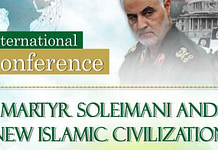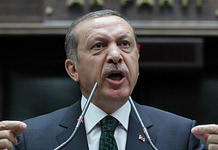In developing countries, interaction between leading and lagging areas is essential to economic development. The still “fashionable” World Development Report 2009 of the World Bank – “Reshaping Economic Geography” – argues that development is to be searched into the so-called 3Ds: distance, density and division. One of the report’s core ideas is that growing cities are integral to development and reducing distances between them and rural places is a fundamental transformation that has to be achieved in order to bring economic prosperity. What the World Bank maintains is the following. If governments want to reduce distances between leading and lagging areas within their countries, they (or other actors: private companies, donor countries) first have to invest in the core zones. Then, profits generated by those investments will trigger spillover effects. In other words, the initial enrichment experienced by central areas would enhance further gradual investment in the neighbouring rural ones. Actually, economics holds that once you invest in a core zone it becomes costly to keep investing there – because of the rising competition among several investors – and you are likely to find cheaper places for investment in surrounding districts. Overall, this principle is right and worked, for instance, in Europe. In fact, such a model is not working in other regions like Southeast Asia or Sub-Saharan Africa, where many developing countries’ urban centres are unable to absorb investments.
In those economies, the less a rural area is close to the rich one, the poorer it is. There, periphery has generally high poverty and unemployment rates, insignificant economic activity (low productivity and income along with stagnant growth), no schools, no services and no enterprises. If locals wish to improve their living standard, they must move to the nearest city. Again, migration is good whenever the conurbation has the capacity to absorb new workers’ waves. In this case, as soon as they find a job, they send part of the earnings back to their families living in the countryside. Here, households fuel positive economic activity (spillover effect) by investing those remittances. So far so good.
However, suppose the city has no absorption capacity. The result is likely to be the opposite. First, workers do not find a job. Therefore, they contribute to increasing the urban poverty rate and, consequently, marginalization. In addition, this scenario encourages crime and political instability: a vicious circle where the cost of necessary social services is very high. That is why it is often heard of political leaders saying poverty is expensive. Certainly, without remittances, countryside is abandoned; and with no remittances, there is no investments. Briefly, this is a “lose-lose” situation where poverty grows both in urban and rural areas.
As already stated, the World Bank stresses the importance of distance between leading and lagging sites. We hereby demonstrate that distance matters when there is exchange of commodities. If distance makes transportation – within ‘country A’ – more expensive than importation – from ‘country B’ – then the local production is undermined and nationals are deprived of their basic source of income, for their country would import from the cheaper ‘country B’. To tackle the issue, any economist would suggest infrastructure investment (e.g. roads) to reduce the distance. The question is why rich investors should pour their money into those unattractive locations. They would rather prefer to invest in pivotal and more fruitful places, which is logical if we consider that the internal rate of return (i.e. profit you get from investment) would be higher. Ethically, it sounds like a paradox: the poorer you are, the less investment you get. Actually, evidence shows financial investment favours short-term spectrum and lagging areas are less profitable even if the long-term impact on the national economy would be far reaching.
The other two concepts the World Bank emphasizes – density and division – are relevant in terms of poverty growth too. Again, profitability matters. As regards density, does building hospitals, schools, or post offices in rural areas bring prosperous businesses? Think about hospitals. Only few people will use such facilities because of both scarce density and low income to pay for the health service. Hence, investors’ returns will be insufficient to balance the original expenditure for constructing hospital complexes. The unit cost is higher than that you bear in macro-urban conglomerations where economies of scale could flourish. It is like a refrain: the smaller, the less remunerative.
What about division? It undoubtedly entails great bureaucracy and transaction costs. As there are neither clear rules nor shared laws between urban and rural regions, there is lack of enforceability. As a consequence, potential peripheral sellers are unable to develop their business and prevented from bringing their products to the core market.
The reason? Ambiguous and different procedures between the two zones make transaction costs very high. The result is that the urban centre imports, from faraway developed markets, similar products it could receive from the country. That is fostering great division within several developing nations and local commodities are not being used for generating residents’ income.
We could assert that in various developing countries the World Bank’s developmental archetype did not fully work. It surely brought growth, but at what cost? Growing inequalities, exclusion, and infringement of fundamental human rights, inevitably fostering polarization.
Furthermore, in rural areas people are dispersed and not able to influence any political decision. When food prices globally increase – as happened in 2007 – serious economic crises are likely to follow there. On such occasions, governments’ policies are usually designed to address concerns of people living in the core zones. Public officials are inclined to avoid political instability so they introduce food subsidies to support them. However, these sites will start to import more from developed countries since it is cheaper. Consumption increases and the vicious circle makes the rich richer and the poor poorer. Another paradox originating from defective policies.
In conclusion, how can the international community put an end to the poverty trap? Can we adopt stricter and effective measures to deal with the problem of persistent inequalities and sustainable urbanization? Where an urbanization process is advancing, interventions must be implemented to deal with slums. As a country industrializes, it concentrates human capital in the cities, where the growth potential is higher. Areas that are distant from the created density lag, while basic needs – such as access to sanitation and electricity – are unmet. The new spatial disparities can be persisting for decades, even if labour force keeps moving from country to city. Integration into the economy of core urban centres should be enhanced to trigger knowledge spillovers. The solution relies on governments and private companies investing in infrastructures within rural and unprofitable contexts to encourage stronger integration and unify distant locations.
Even if global poverty continues to decline, better governance is required – honest and responsible governments, especially in developed countries driving the economy. In addition, the latter should set up transformation processes to involve rural communities in their own countries’ activities as well as to organize them politically. This is the only way to foster inclusive growth and social protection.
Questo articolo è coperto da ©Copyright, per cui ne è vietata la riproduzione parziale o integrale. Per maggiori informazioni sull'informativa in relazione al diritto d'autore del sito visita Questa pagina.




















